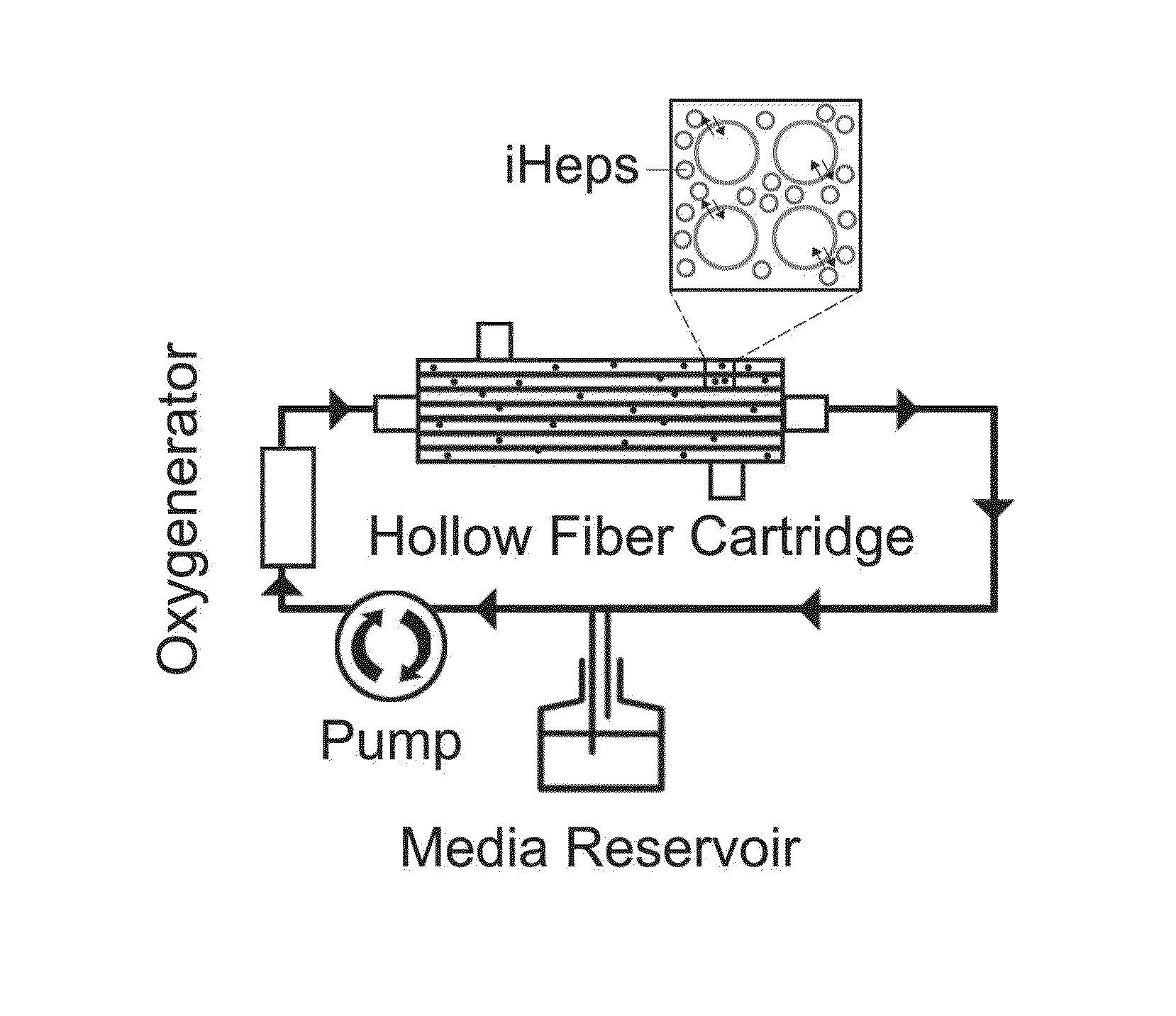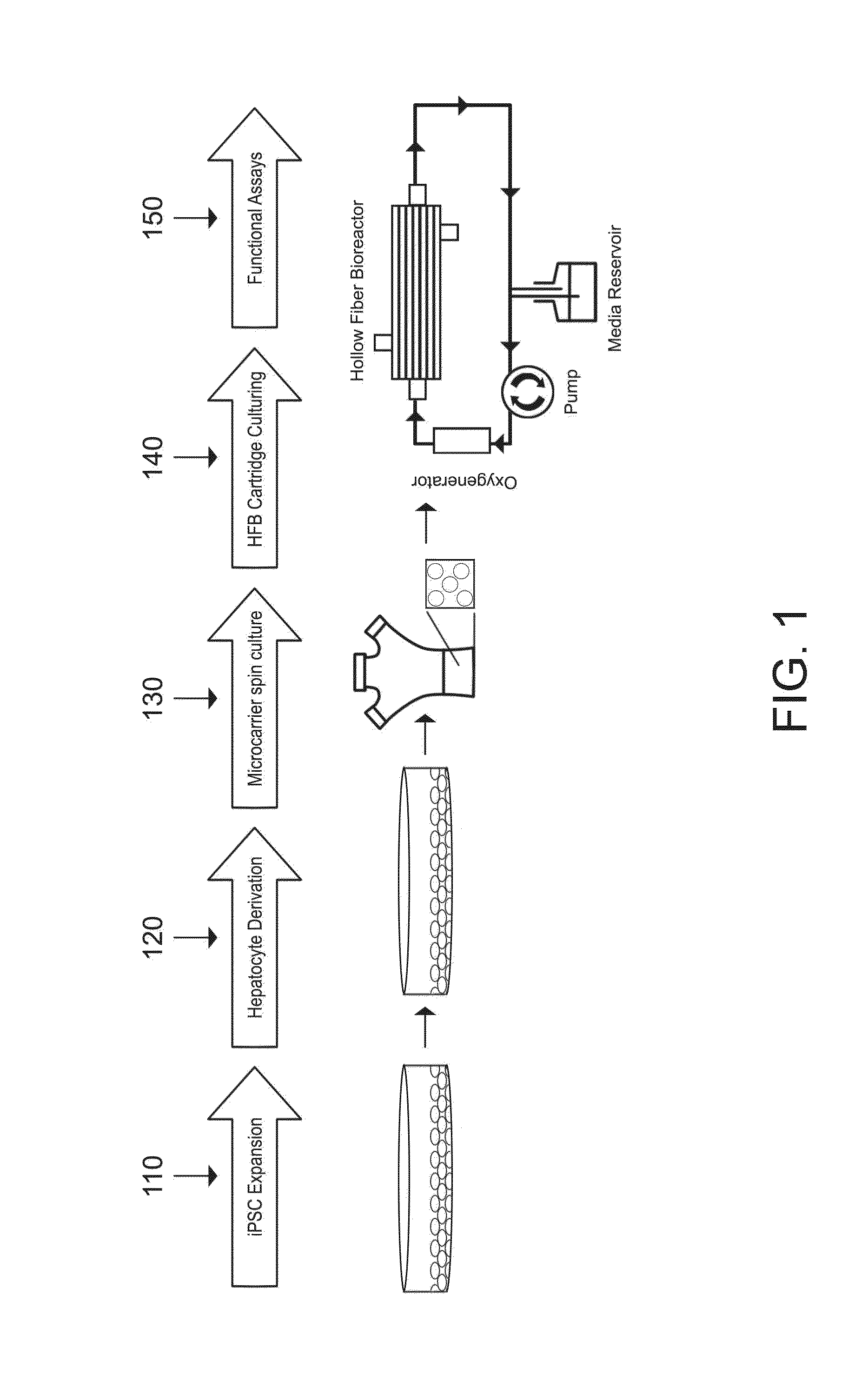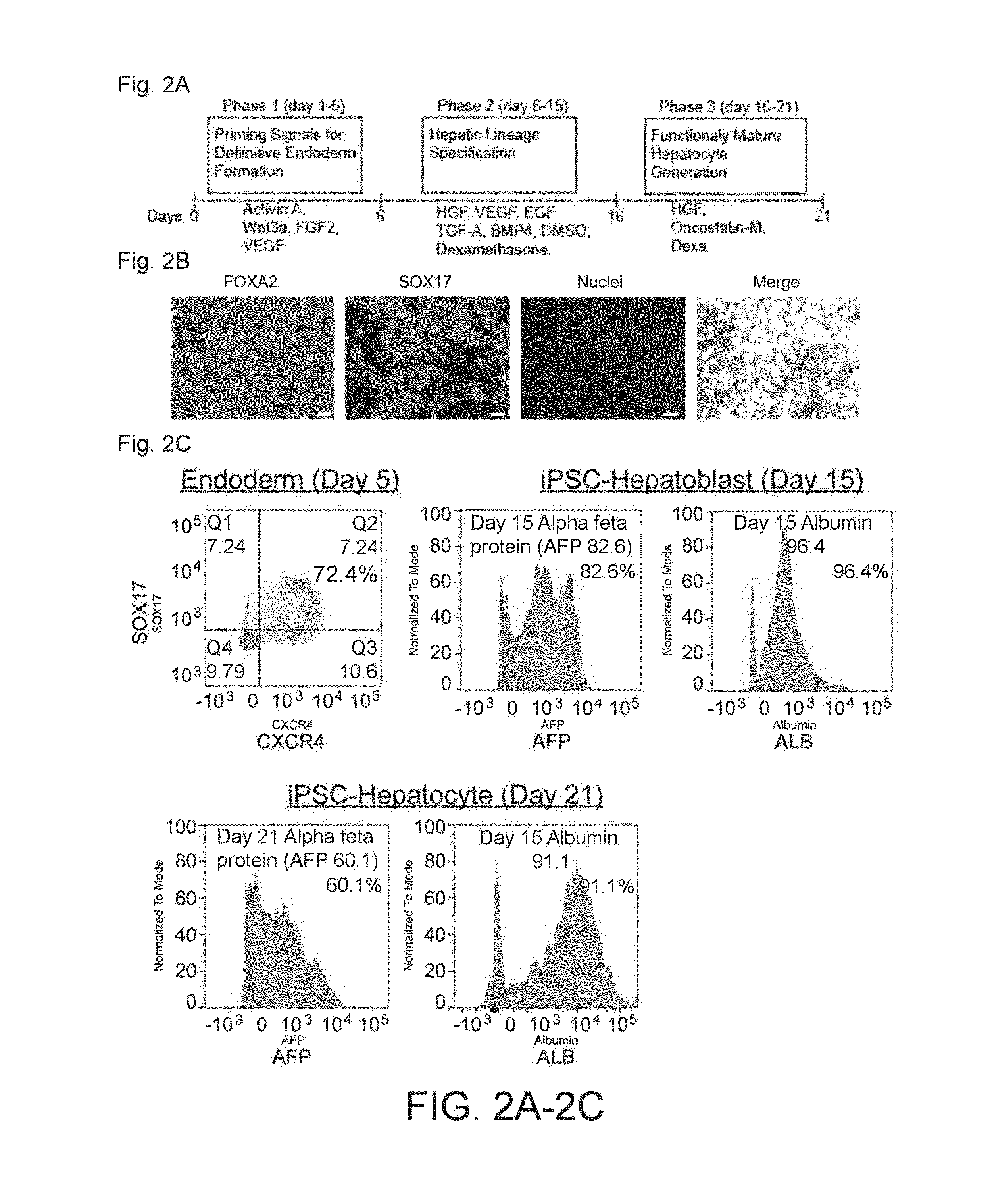Induced pluripotent stem cell-derived hepatocyte based bioartificial liver device
a bioartificial liver and stem cell technology, applied in the field of acute or chronic liver failure therapy, can solve the problems of limited cell sources, scarce human hepatocytes, and hepg2-based human tumor cells posing theoretic risk of transmission of malignancy, so as to reduce toxic buildup in the blood, improve quality and risk
- Summary
- Abstract
- Description
- Claims
- Application Information
AI Technical Summary
Benefits of technology
Problems solved by technology
Method used
Image
Examples
example 1
General Methods
[0069]Generally, an example of a multi-step differentiation protocol for generating of hepatocytes is shown in FIG. 1. First, the iPSCs are expended 110 in a 2 or 3 dimensional array. Next, the cells are cultured to achieve hepatocyte derivation 120. Following derivation, a technician may perform a microcarrier spin culture 130 on the hepatocytes, in order to fix the hepatocytes on microcarriers. In some embodiments, then, the microcarriers will be loaded into a hollow fiber bioreactor (HFB) for further culturing 140 and maturation.
example 2
Cells and Reagents
[0070]In this example experiment, the human iPSC line 83iCTRL was obtained from Cedars Sinai Medical Center iPSC core facility [33]. The iPSC 83iCTRL line was established by reprogramming normal human fibroblast using non-integrating expression vector carrying OCT4, SOX2, KLF4, and L-MYC genes. Human embryonic stem cell (hESC) line, WA09 (H9), was obtained from WiCell Research Institute, USA. The iPSCs and hESCs were cultured using serum free chemically defined media, mTeSR1, (STEMCELL Technologies, Canada) with daily media change regimen at 37° C. incubator with 5% CO2. The human liver cancer cell line HepG2 and Huh7.5.1 was maintained on complete Dulbecco's modified Eagle's medium (DMEM) (Fisher Scientific). Complete DMEM was supplemented with 10% fetal bovine serum (FBS), 10 mM Hepes, 10 mM nonessential amino acids, penicillin (100 units / ml), streptomycin (100 mg / ml), and 2 mM Lglutamine (Life Technologies).
example 3
In Vitro Differentiation of Human iPSCs into Hepatic Lineage Cells
[0071]For in vitro differentiation, the iPSCs were single cell plated in a 6 well plate, cultured at 37° C. in 5% CO2 and subjected to a 3 week hepatic differentiation protocol. The differentiation steps consisted of three phases, including endoderm induction (day 1-5), hepatic specification (day 6-15) and hepatic maturation (day 16-21). The cytokines were purchased from Peprotech Inc., (Rocky Hill, N.J.) unless otherwise mentioned. The cells were differentiated to endoderm for 5 days using IMDM / F12 or RPMI media (Life Technologies) supplemented with Wnt 3A (40 ng / ml, R and D Systems) and Activin A (100 ng / ml) for the first one day and then treated with Activin A, VEGF (10 ng / ml) and bFGF (10 ng / ml) for an additional 4 days. From day 6 onwards, the media was changed to IMDM / F12 supplemented with BMP4 (50 ng / ml), VEGF (10 ng / ml), EGF (10 ng / ml), TGFα (20 ng / ml), HGF (100 ng / ml), dexamethasone (1×107 M; SigmaAldrich, St...
PUM
 Login to View More
Login to View More Abstract
Description
Claims
Application Information
 Login to View More
Login to View More - R&D
- Intellectual Property
- Life Sciences
- Materials
- Tech Scout
- Unparalleled Data Quality
- Higher Quality Content
- 60% Fewer Hallucinations
Browse by: Latest US Patents, China's latest patents, Technical Efficacy Thesaurus, Application Domain, Technology Topic, Popular Technical Reports.
© 2025 PatSnap. All rights reserved.Legal|Privacy policy|Modern Slavery Act Transparency Statement|Sitemap|About US| Contact US: help@patsnap.com



